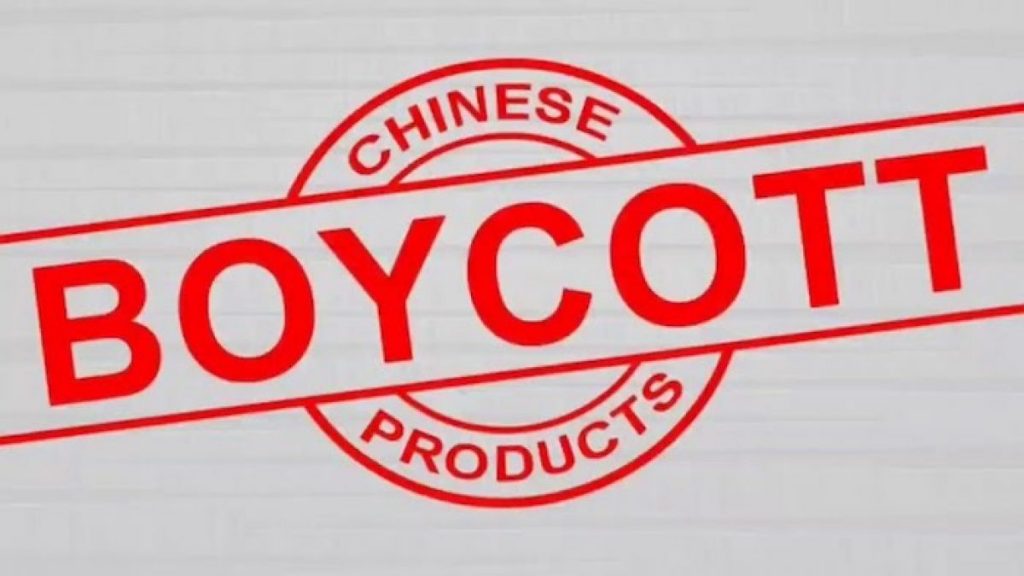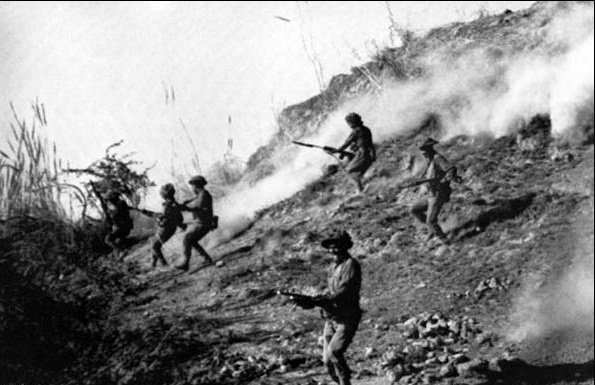China India relations also called Sino-Indian relations or Indo- China relations, refers to the bilateral relationship between the People’s Republic of China (PRC) and The Republic of India. The modern relationship to end formal ties with the Republic of China (Taiwan) and recognize the PRC as the legitimate government of Mainland China. China and India are the two most populous countries and fastest-growing major economies in the world. Growth in diplomatic and economic influence has increased the significance of their bilateral relationship. Currently, ties between India and China have deteriorated due to a military standoff in LAC( Line of Actual Control).
Relations between contemporary China and India have been characterized by border disputes, resulting in 5 military conflicts- the Sino Indian war 1962, the Chola and Nathula incident in 1967, and the 1987 Sino-Indian skirmish, The Doklam incident in 2017.
In 2008, China became India’s largest trading partner and the two countries have also extended their strategic and military relations. Despite growing economic and strategic ties, There are several hurdles for India and the PRC to overcome.
The two countries failed to resolve their border dispute and Indian media outlets have repeatedly reported Chinese military incursions into Indian territory. Both countries have steadily established military infrastructure along with border areas. Additionally, India remains worried about China’s strong strategic bilateral relations with Pakistan.
Line of Actual Control(LAC)
There are Four Indian states and one Indian Territory that shares borders with China. They are the Union territory of Ladakh, Himachal Pradesh, Uttarakhand, Sikkim, and Arunachal Pradesh. This is called the Line Of Actual Control(LAC). LAC is the effective border between India and China. The total length of this border is 4056 km.
It divided into three sectors, the Eastern sector which includes the border of Arunachal Pradesh and Sikkim, The middle sector is in Uttarakhand and in Himachal Pradesh and the western sector in Ladakh.

Sino- Indian War-1962
First time India and China squared off in 1962 named as Sino-India War. Chinese disputed Himalayan border was the main reason for the war. After the Tibetian issues with China when India granted asylum to the Dharma Guru Dalai lama in 1959. There had been continuous border violent skirmishes between the two countries.
When India rejected proposed Chinese diplomatic settlement throughout 1960-1962, with previously banned”forward patrols” from 30 April 1962. Then on 20 September, 1962 Chinese troops attacked Rezang La in Chushul and in Twang. The war continued for 1 month and 1 day and it ended on 21 November.
As India was not prepared so India deployed 10,000-12,000 soldiers while China deployed 80,000- 1 lakh soldiers. Hence the result was unfortunately India lost the war and illegally China occupied a region ( Aksai Chain ) of Jammu & Kashmir.
Also Read : Know about Women Harassment during COVID – 19 Lockdown
The Cho-la & Nathu-la Incident-1967
Again China started to infiltrate in 1967. In the same year, China created two issues at Cho-la and Nathu-la of Sikkim. At that time Sikkim was not a state of India but India took the responsibility to protect Sikkim. In 1967 Chinese troops started to infiltrate the Nathu-la region. Indian Army stopped them but the issues continued for months. Lastly when the Indian Army started laying the stretch of fencing from Nathu la to Cebu la to solve the issue. Chinese troops asked the Indian Army to stop laying the ware. but India soldiers refused to halt. After That Chinese troops started open Firing. India gave a befitting reply to China by killing more than 400 Chinese soldiers.
The war continued for five days from 11th September to 15th September 1967. At last, India stopped the war after the request of China but more than 80 soldiers of India went under casualty.
On 1st October 1967 Chinese troops attacked Cho-la but the war ended on the same day. At last the Chinese were forced to withdraw nearly three kilometers away from the border.

The Sino-Indian skirmish -1987
The Sino Indian Skirmish 1987 was the third conflict that occurred at summoning chu valley, Arunachal Pradesh. till 1972 Arunachal Pradesh was known as North-East Frontier Agency(NEFA), A part of Assam.
On 20th January 1972, India Declared it as a union territory and renamed it as Arunachal Pradesh and Arunachal Pradesh become a full-fledged state on 20th February 1987. But when at the end of 1986 India granted statehood to Arunachal Pradesh, the Chinese government proceeded to protest. China prepared military troops near the Macmohan line. Then Operation Falcon was launched by India under the guidance of Army Chief General K Sundarji. Both Countries came close to a war. But Indian diplomacy mixed with caution and aggression managed not only to avoid the war but also brought China for a discussion. At last, China was bound to withdraw his troops from the border.
Doklam Incident – 2017
In 2017 both Indian troops and people’s liberation Army of China have been stand-off at Doklam at the Tri-junction between Bhutan, China & India. Tensions flared in Mid June when China began constructing a road in the disputed Doklam plateau which is near to the highway of India.
For the first time, India and China squared off on the soil of a third country(Bhutan). China says Doklam plateau is its territory and whatever its dispute in the area with Bhutan. Indian troops have necessarily butted in.
As Bhutan is dependent on its big neighbor India strategically, Politically, and economically. so India took the responsibility to protect Bhutan.
Doklam Plateau is a 269 sq km plateau in Bhutan which overlooks the strategic chubby valley. The road which passes through Bhutan’s territory has significantly enhanced China’s military logistics in the region. In recent years China has been building an elaborate network of roads wide enough to transport Artillery Guns, light tanks, and heavy vehicles to enhance its military presence. Dokalm is critical as it brings China even closer to the India border in a vulnerable location towards the direction of the 27 km long Siliguri corridor that links the northeastern state to the rest of India.
On 16 June 2017 Chinese troops with construction vehicles and road-building equipment began extending an existing road southward in Doklam. On 18 June 2017, about 270 Indian troops armed with weapons stopped Chinese troops. After continuous face-offs on 28th August, both India and China announced to withdraw their troops from the face-offs site in Doklam.

Ongoing skirmishes-2020
Now in 2020, China wants to show its Global power to the world while the whole world is suffering from Pandemic COVID-19.
From 5 May 2020 Chinese and Indian troops face off at locations along the Sino-Indian border, near Pangong Lake in Ladakh and the Tibet Autonomous Region.
In 2019 the BJP govt. reconstitute the state of Jammu & Kashmir as two Union territories as Jammu & Kashmir, Ladakh.
Aksai chain( Northeastern part of Ladakh) is now under China Control. India lost this part in the 1962 war. This region is currently administered by China but at the same time it is claimed to be a part of Ladakh by India and Galway Valley is the place where both countries’ military troops stand up. Karakoram range separates Ladakh from the Aksai chain. The average elevation of the Karakoram range is about 6000 meters and this is very difficult for a normal person to survive here. And the Chinese knew this. so the Chinese want the LAC to go through the highest pressing of the Karakoram mountains. so that India does not control the border properly.
Now India wants to construct a Road from Dar buk- Shayk village to Daulat Beg Oldi road(DBO). It is a 255km road and this road runs exactly parallel to LAC.and the Chinese forces objected to Indian road construction in the Galway valley. and During the face-off on 15/16 June 2020, 20 Indian Soldiers martyred and China did not confirm the Casualties and now India wants to give a befitting reply to China by reducing dependence on China.
The Boycott China Campaign was started in India by the Man himself Sonam Wangchuck. The Government of India banned 59 Chinese applications earlier this week.




